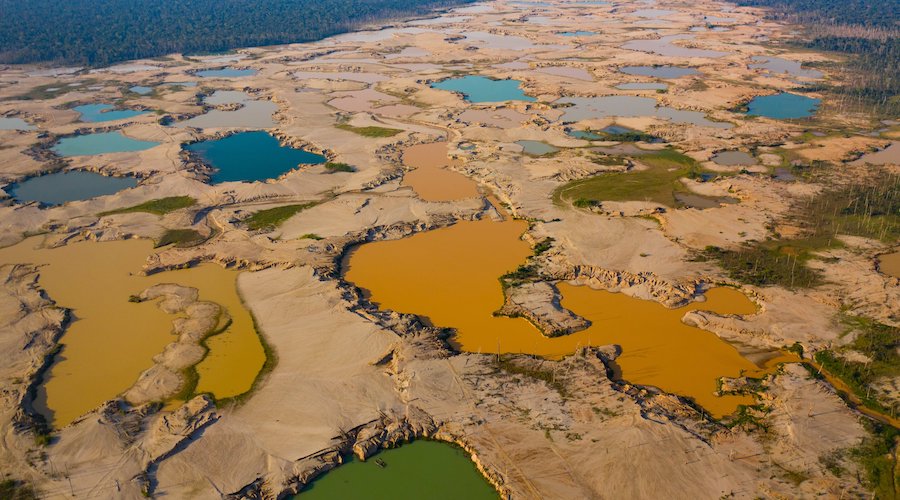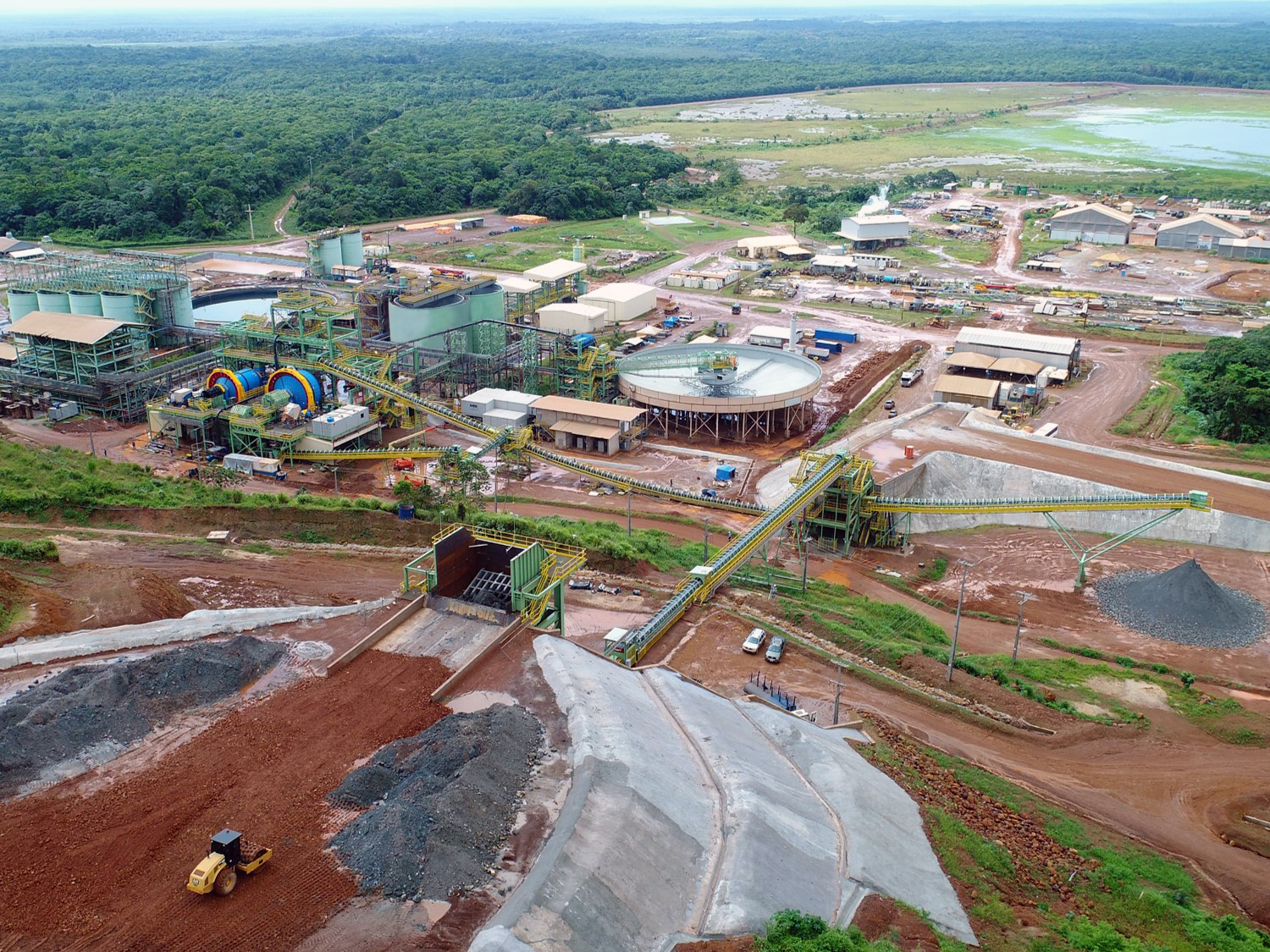Mining boom across the tropics degrading rivers systems
Shallow mining ponds overwhelm a former river system in the La Pampa region of Madre de Dios, Peru. (Image by Jason Houston – iLCP Redsecker Response Fund/CEES/CINCIA-).
A recent study published in the journal Nature found that gold and mineral mining in and near rivers across the tropics is degrading waterways in 49 countries.
The paper explains that river mining often involves intensive excavation, which results in deforestation and increased erosion. Much of the excavated material is released to rivers, disrupting aquatic life in ecosystems nearby and downstream. This inorganic sediment, particles of clay, silt, and sand, is carried by rivers as “suspended sediment,” transmitting the environmental effects of mining downstream.
Prior research has reported that such suspended sediment also carries toxins such as mercury used in river mining processes, which further affects water quality and can be detrimental to human health and the environment.
“For hundreds, if not perhaps, thousands of years, mining has been taking place in the tropics but never on the scale as we’ve seen over the past two decades,” Evan Dethier, who worked on the study while he was a postdoctoral researcher at Dartmouth College, said in a media statement. “The degradation of rivers from gold and river mining throughout the tropics is a global crisis.”
Tropical mining
For the first part of the study, Dethier and fellow researchers conducted a comprehensive analysis of river mining across the tropics from 1984 to 2021. They assessed information from the media and literature, mining company reports, social media, satellite imagery via the NASA/United States Geological Survey Landsat program and Sentinel-2 data, as well as aerial images from public sources.
They recorded over 7.5 million measurements of rivers around the world to map mining areas, and deforestation and sediment impacts. They also identified target minerals at the mining sites.
The results show that there are approximately 400 individual mining districts in 49 countries across the tropics. More than 80% of the mining sites are located within 20 degrees of the equator in South America, Africa, Asia, and Oceania.
The team also identified a major uptick in mining in the 21st century, with the emergence of mining at 60% of the sites after 2000, and 46% after 2006, coincident with the global financial crisis. This increase in mining continued even through the covid-19 pandemic.
For the second part of the study, the researchers assessed the magnitude that mining operations have had on the amount of suspended sediment in 173 affected tropical rivers. To detect the transport of suspended sediment using Landsat data, the team applied algorithms that they developed during the past seven years.
Rivers in Africa, Asia, Oceania, and South America altered by 21st century mining boom. (Figure by Evan Dethier).
From clear to muddy
The data shows that more than 35,000 kilometres of tropical rivers are affected by gold and mineral mining around the world. This is equivalent to 6% of the 500,000 kilometres of tropical rivers that run across the planet. Furthermore, mining has caused suspended sediment concentrations to double in 80% of the 173 rivers represented in the study, relative to pre-mining levels.
“These tropical rivers go from running clear either throughout the year or at least through part of it, to either being choked with sediment or muddy year-round,” Dethier said. “We found that almost every single one of these mining areas had suspended sediment transmitted downstream, on average, at least 150 to 200 kilometres from the mining site itself but as much as 1,200 kilometres downstream.”
There are 30 countries that have both active river mining operations and large tropical rivers that are more than 50 meters wide. The researchers found that in those countries, on average, 23% of the length of their large rivers is affected by mining. In some countries, more than 40% of the total length of those large rivers is altered by mining, including French Guiana (57%), Guyana (48%), Cote d’Ivoire and Senegal (40%).
The study also included rivers such as the Congo in Africa, the Irrawaddy in Asia, the Kapuas in Oceania, and the Amazon and Magdalena in South America.
“Many of these tropical river systems are very biodiverse places, if not some of the most biodiverse places on earth and are still currently understudied,” David Lutz, senior author of the study, said. “The challenge here is that there are many species that could potentially become extinguished before we even knew that they existed.”
Developed countries’ standards
To evaluate the ecological impact of river mining in the tropics, the team examined environmental management guidelines used in the US and elsewhere and applied the standards to their data.
Since mining began, they found that two-thirds of the rivers represented in the study exceeded the turbidity guidelines for protecting fish on 90% of the days or more, meaning the cloudiness of the rivers was higher than recommended.
“When rivers and streams experience high levels of suspended sediment, fish are unable to see their prey or predators and their gills may become choked with sediment and damaged, which can lead to disease or even mortality,” Lutz noted.
The team’s prior work reported on how gold mining is a problem in the Madre de Dios region of the Peruvian Amazon, by poisoning wildlife and people.
“While gold mining has a lot of potential to lift people out of poverty, particularly on remote tropical frontiers, the way it is done now comes at a tremendous societal cost from environmental degradation, mercury pollution, and corruption and criminal networks,” Miles Silman, co-author of the paper, said.
While gold is the principal target for miners and accounts for nearly 80% or more of the mining sites, mining along rivers in central and west-central Africa, particularly, in Angola, the Democratic Republic of the Congo, and Cameroon, makes diamonds the second most mined mineral in the tropics.
The “engagement rocks” are followed by nickel, particularly in Southeast Asia, and cobalt, coltan, tungsten, and tantalite, in the Democratic Republic of the Congo.
“These minerals are becoming increasingly necessary as we transition away from fossil fuels to clean energy,” Dethier pointed out. “So, this is an important area to keep track of.”
The co-authors call on policymakers to work with stakeholders to help mitigate the environmental and social impacts that mining is having on tropical rivers given that it’s likely to continue into the foreseeable future.
Share this content:














